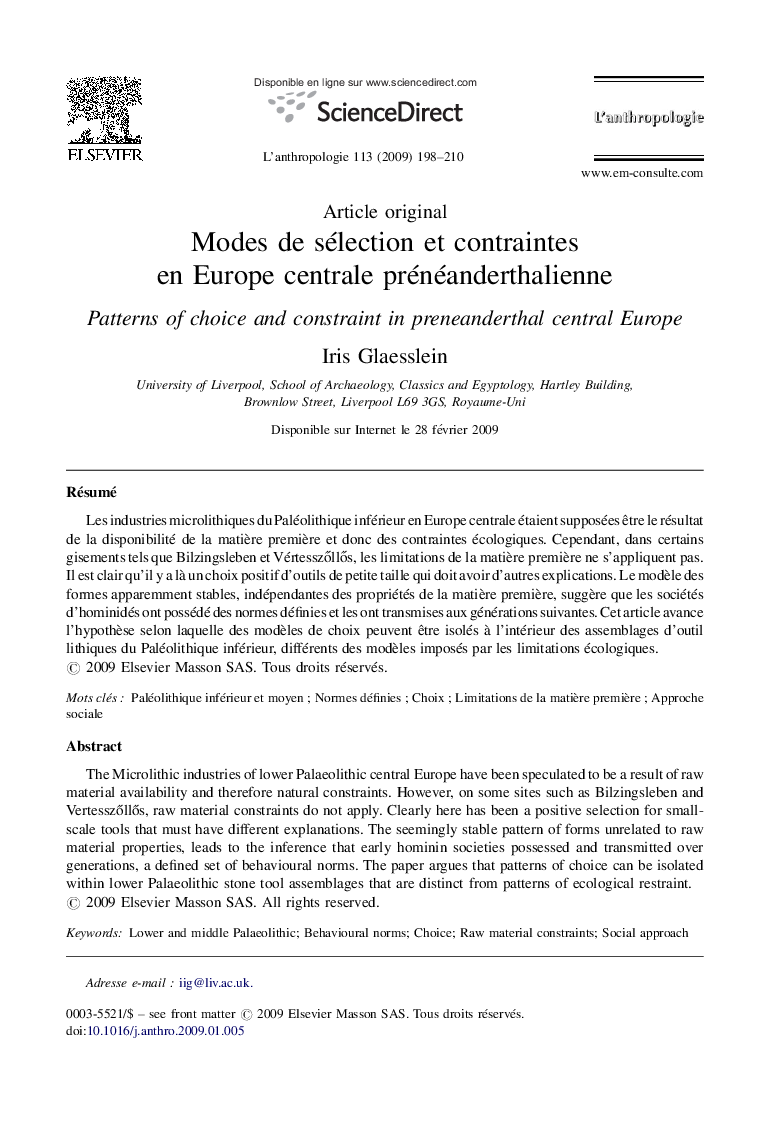| Article ID | Journal | Published Year | Pages | File Type |
|---|---|---|---|---|
| 1033919 | L'Anthropologie | 2009 | 13 Pages |
Abstract
The Microlithic industries of lower Palaeolithic central Europe have been speculated to be a result of raw material availability and therefore natural constraints. However, on some sites such as Bilzingsleben and VertesszÅllÅs, raw material constraints do not apply. Clearly here has been a positive selection for small-scale tools that must have different explanations. The seemingly stable pattern of forms unrelated to raw material properties, leads to the inference that early hominin societies possessed and transmitted over generations, a defined set of behavioural norms. The paper argues that patterns of choice can be isolated within lower Palaeolithic stone tool assemblages that are distinct from patterns of ecological restraint.
Related Topics
Social Sciences and Humanities
Arts and Humanities
History
Authors
Iris Glaesslein,
